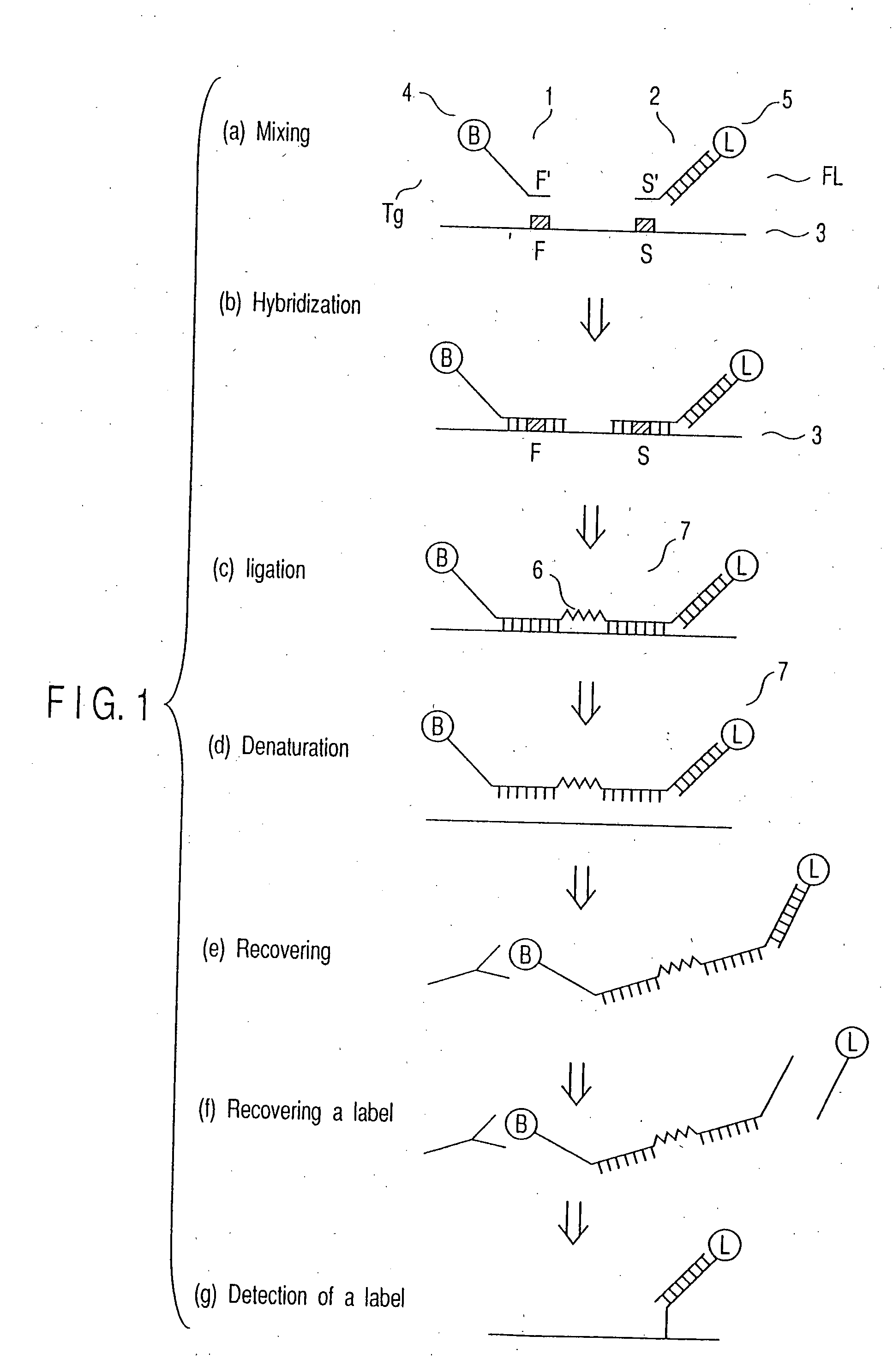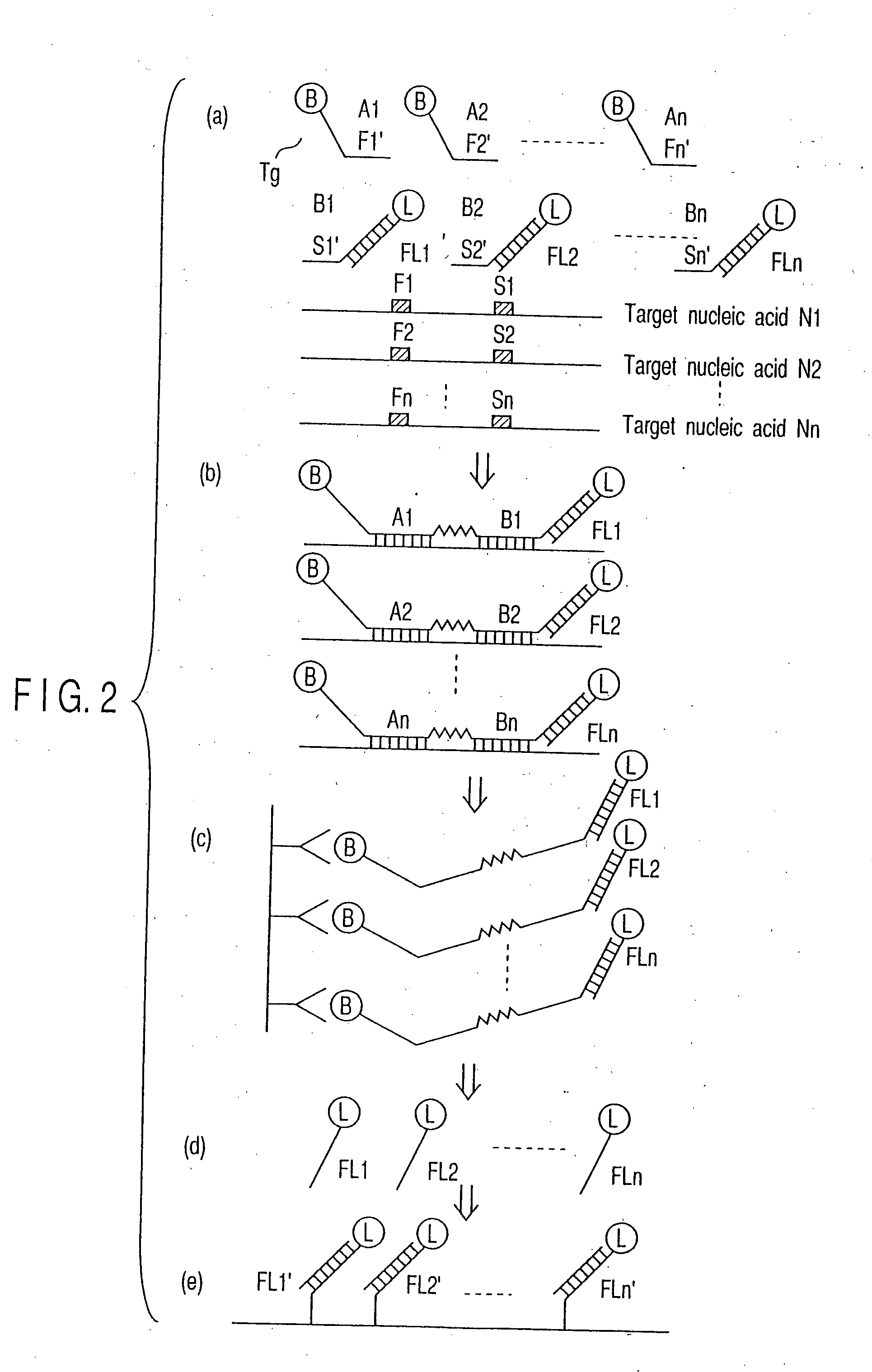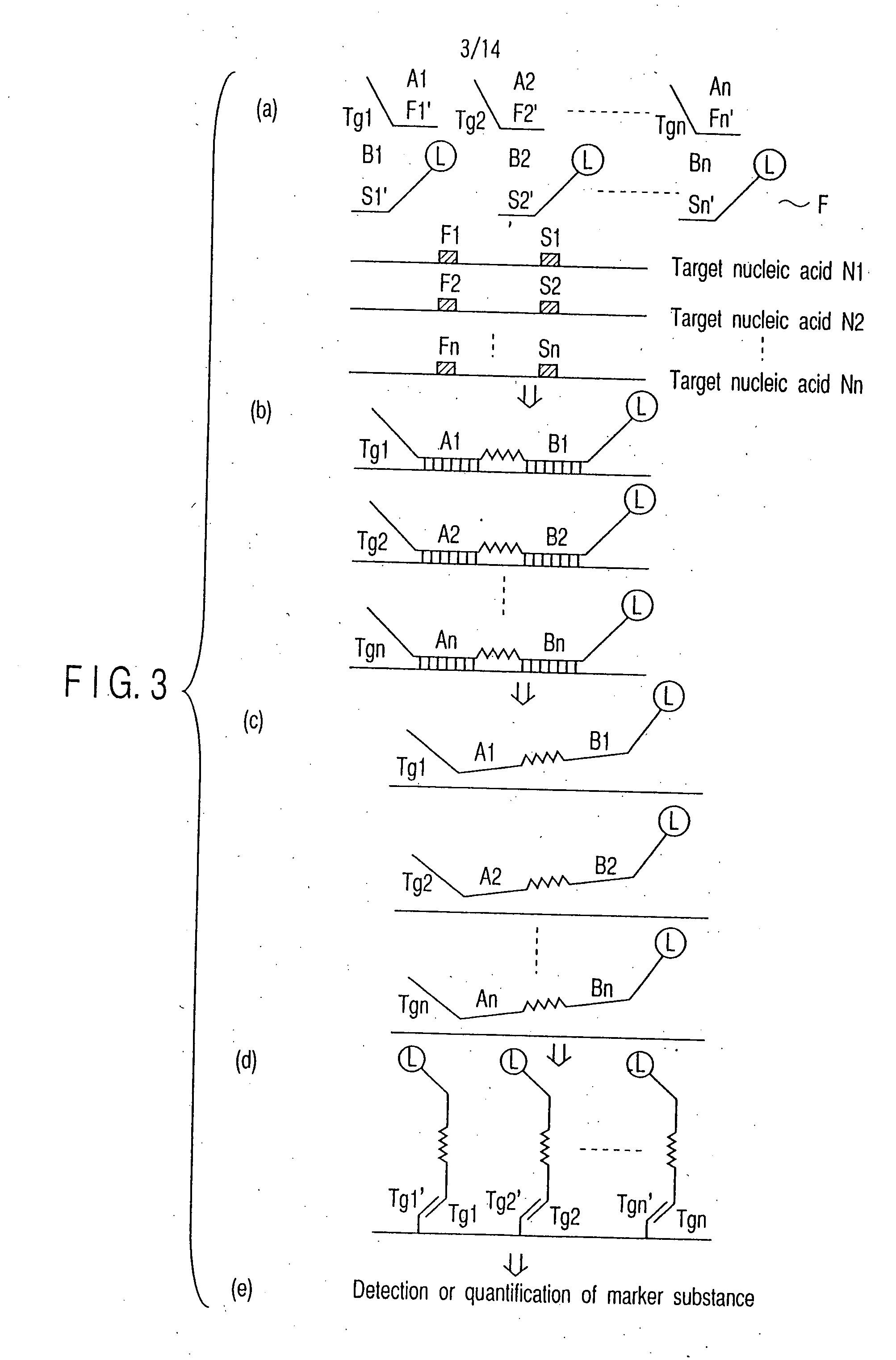Method of detecting nucleic acid
a nucleic acid and nucleic acid technology, applied in the field of nucleic acid detection methods, can solve the problems of difficult to distinguish between analogous sequences, low specificity, difficult to detect target nucleic acids, etc., and achieve excellent quantification, stable detection results, and accurate quantification and quantification
- Summary
- Abstract
- Description
- Claims
- Application Information
AI Technical Summary
Benefits of technology
Problems solved by technology
Method used
Image
Examples
example 1
Detection Method
[0052] A detection method of the present invention will be explained with reference to FIG. 1 (FIG. 1).
[0053] In the method of this example, two types of nucleic acid probes. (hereinafter, sometimes simply referred to as “probe”) shown below, a probe Al and a probe B2, are used (FIG. 1a).
[0054] The probe A1 is constituted of a sequence F′ and a binding molecule 4 bound to the sequence F′. The sequence F′ is complementary to a nucleotide sequence F of a partial region of the target nucleic acid 3. The binding molecule 4 used herein may directly bind to the sequence F′ or indirectly bind to the sequence F′ via some portion such as an arbitrary nucleotide sequence. The portion except the nucleotide sequence F of the probe Al may be referred to as a “tag”, “tag sequence Tg” or “Tg”. The arbitrary sequence, which is responsible for the indirect binding, may be a nucleotide sequence having any number of nucleotides. More preferably, the sequence may be a non-complementa...
example 2
Example of Detection Method
[0076] This method is also effective when a plurality of target nucleic acids are simultaneously detected. FIG. 2 shows the case where a plurality of target nucleic acids N1, N2, N3 Nn (hereinafter referred to as “N1-Nn”) where n is an integer of 2 or more) are simultaneously detected.
[0077] Individual steps and the constitutions of individual probes are the same as in Example 1 except that a plurality of detection targets are used (FIG. 2, a to e).
[0078] To-explain more specifically, target nucleic acids N1-Nn, probes A1-An, and probes B1-Bn are mixed (FIG. 2a). They are allowed to hybridize with the target nucleic acids, respectively, and then the probes A1-An are linked to the probes B1-Bn, respectively (FIG. 2b). The resultant probes (A1+B1)-(An+Bn) are dissociated from the target nucleic acids (not shown). Then, the probes (A1+B1)-(An+Bn) dissociated are recovered (FIG. 2c). Each of the flags is denatured to obtain a single strand (FIG. 2d). The si...
example 3
Example of Detection Method
[0083] Referring to FIG. 3, another example of the present invention will be explained. In the method of this example, a plurality of target nucleic acids N1, N2; N3 . . . Nn (Hereinafter, referred to as N1-Nn where n is an integer of 2 or more) can be simultaneously detected. Probes A1, A2, A3 . . . An (hereinafter referred to as “A1-An” where n is an integer of 2 or more) and probes B1, B2, B3 . . . Bn (hereinafter referred to as “B1-Bn” where n is an integer of 2 or more) are prepared corresponding to the target nucleic acids N1-Nn. These nucleic acid probes have the characteristics shown below (FIG. 3a).
[0084] The probes A1-An are formed of sequences F1′ to Fn′, and tag Tg1 to Tgn (hereinafter referred to as “Tg1-Tgn”) bound to the sequences F1′ to Fn′, respectively. The sequences F1′ to Fn′ are complementary to nucleotide sequences F1 to Fn, which are parts of the target nucleic acids N1-Nn, respectively. The tag Tg1 to Tgn (hereinafter referred to ...
PUM
| Property | Measurement | Unit |
|---|---|---|
| temperature | aaaaa | aaaaa |
| temperature | aaaaa | aaaaa |
| pH | aaaaa | aaaaa |
Abstract
Description
Claims
Application Information
 Login to View More
Login to View More - R&D
- Intellectual Property
- Life Sciences
- Materials
- Tech Scout
- Unparalleled Data Quality
- Higher Quality Content
- 60% Fewer Hallucinations
Browse by: Latest US Patents, China's latest patents, Technical Efficacy Thesaurus, Application Domain, Technology Topic, Popular Technical Reports.
© 2025 PatSnap. All rights reserved.Legal|Privacy policy|Modern Slavery Act Transparency Statement|Sitemap|About US| Contact US: help@patsnap.com



